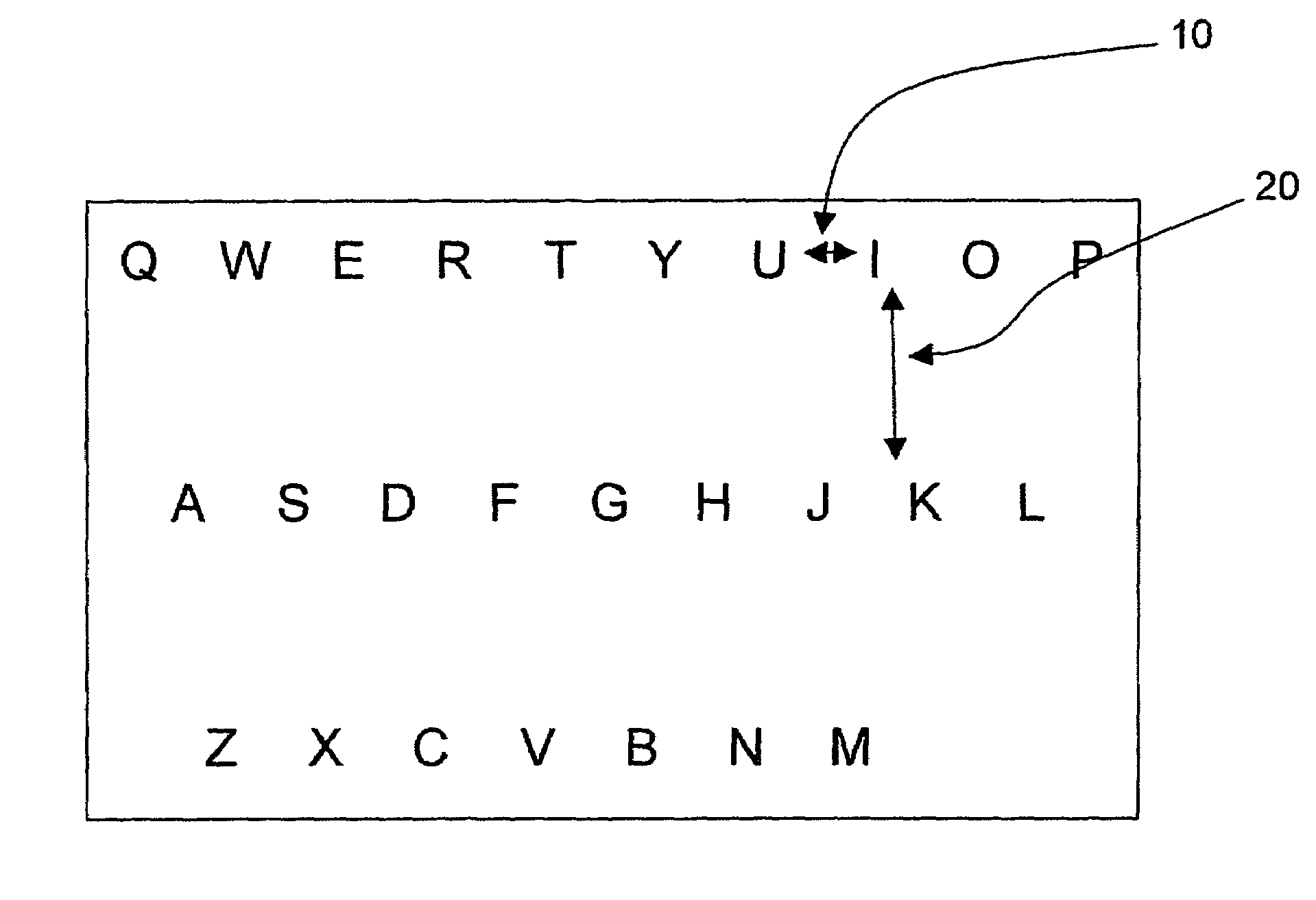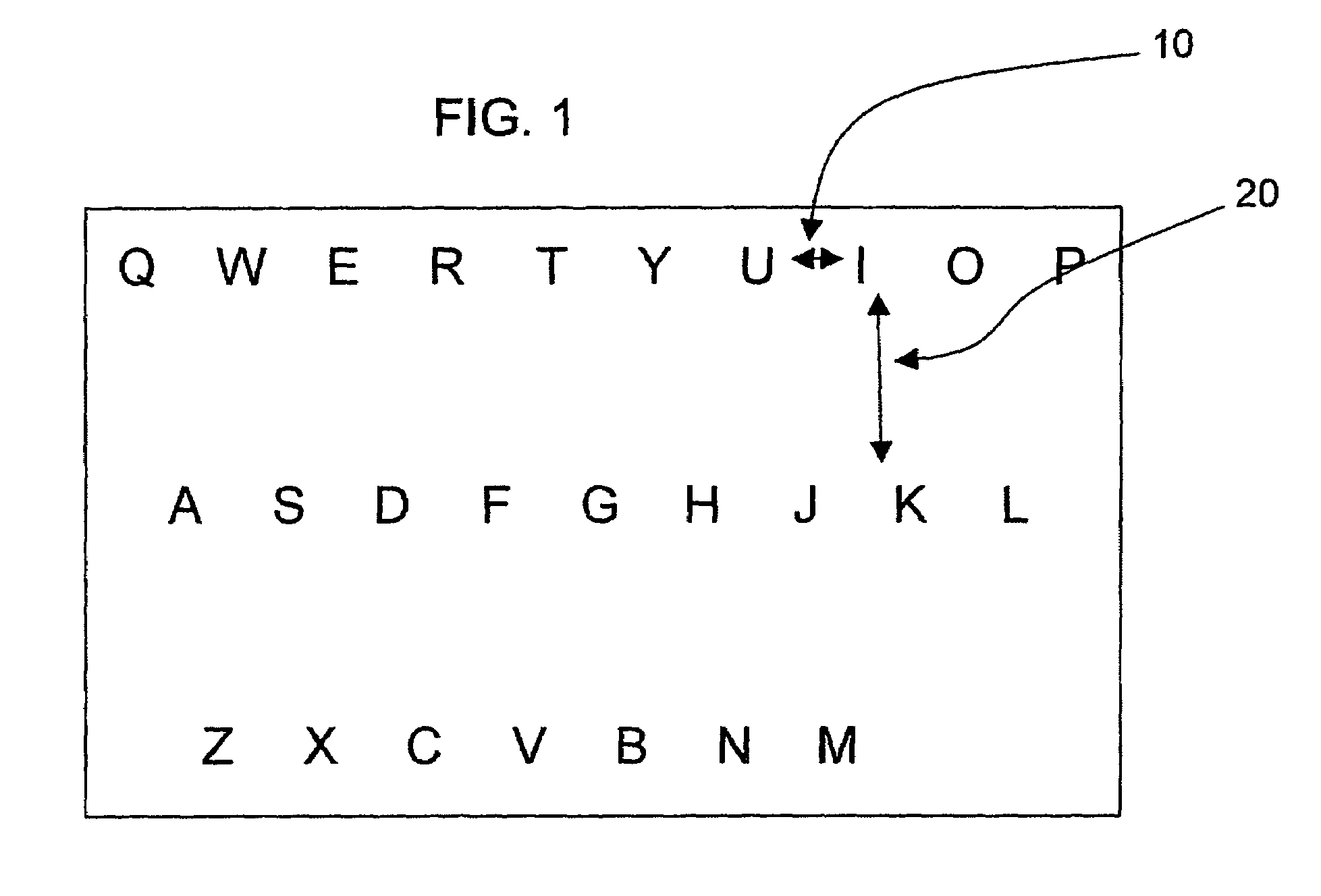Finger activated reduced keyboard and a method for performing text input
a technology of reduced keyboard and keyboard, which is applied in the direction of coding, instruments, pulse techniques, etc., can solve the problems of inability to provide efficient text input means, limited keyboard size on small-sized devices, and serious drawbacks of host device size limitation, etc., and achieve the effect of fast tapping
- Summary
- Abstract
- Description
- Claims
- Application Information
AI Technical Summary
Benefits of technology
Problems solved by technology
Method used
Image
Examples
Embodiment Construction
[0026]Reference will now be made in detail to the present preferred embodiments of the invention as illustrated in the accompanying drawings. The present invention provides a keyboard whose input is preferably performed using the fingers or the thumbs. Consequently, the user can easily use his two hands in parallel, ensuring a faster and more natural input that does not require any additional assistive device such as a pen or a stylus. The dimensions of the keyboard can be sufficiently reduced, such as to enable the fitting thereof into any small-sized handheld devices. Keyboards with the dimensions of about 3 cm×2.7 cm or less are very efficient. Commercially available mini-keyboards for PDAs require “hard-tapping” (i.e. the application of a relatively high degree of pressure on a key in order to activate said key). This feature minimizes the misinterpretation of the targeted key with one of its neighbors. As the thumb pressure on relatively small keyboards is scattered on several ...
PUM
 Login to View More
Login to View More Abstract
Description
Claims
Application Information
 Login to View More
Login to View More - R&D
- Intellectual Property
- Life Sciences
- Materials
- Tech Scout
- Unparalleled Data Quality
- Higher Quality Content
- 60% Fewer Hallucinations
Browse by: Latest US Patents, China's latest patents, Technical Efficacy Thesaurus, Application Domain, Technology Topic, Popular Technical Reports.
© 2025 PatSnap. All rights reserved.Legal|Privacy policy|Modern Slavery Act Transparency Statement|Sitemap|About US| Contact US: help@patsnap.com



